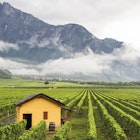

Few multiday mountain hikes rival the Tour du Mont Blanc © Quentin Boehm
If you’ve got one European long-distance hike on your bucket list, it’s probably the Tour du Mont Blanc. It was on mine, too.
Views over sparkling glaciers, Alpine prairies and lots (and lots!) of cheese await anyone who embarks on this border-crossing trek. Circling the largest peak in the Alps, Mont Blanc, the trail covers 170km (105 miles), climbs more than 10,000m (32,800ft) in cumulative altitude, and weaves through three Alpine countries: France, Italy and Switzerland.
Every dream feels far away – until we start to break down what we need to do to achieve it. Here’s what it takes to hike or run the Tour du Mont Blanc.
- placement: fullWidth
- path: articles/in-content-top
- possible size: [970, 250], [970, 90], [728, 90], [300, 250], [320, 50], [1, 1],
- targeting:
{ "url": "slow-travel-tour-du-mont-blanc-hike-alps", "destination": "French-Alps-&-the-Jura-Mountains", "continent": "Europe", "country": "France", "region": "French-Alps-&-the-Jura-Mountains" }
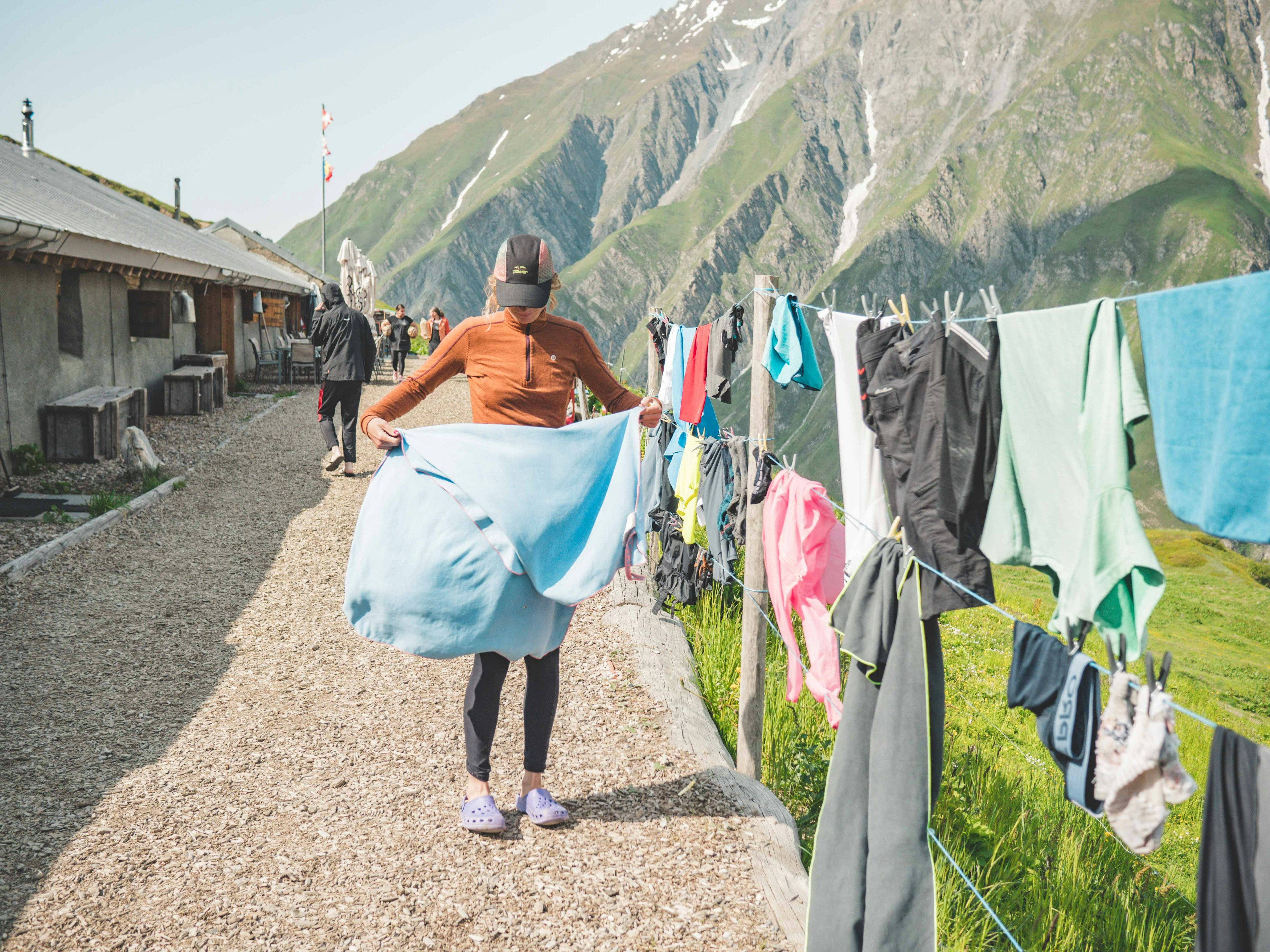
How I prepared for hiking the Tour du Mont Blanc
Don’t laugh at the folks who’ve sawed off the handle of their toothbrush to save on weight. Many of the climbs along the Tour du Mont Blanc are arduous, and every gram really does count.
My first question as I prepared my bag was, Where would I sleep? Opting for camping would make the trek feel really wild, let me spend more time in nature and give a bit more flexibility about where and when I’d arrive each night. On the flip side, this would mean my home would be on my back (like a turtle), and heavy enough to reduce my walking speed significantly.
The other option was to sleep in refuges, or mountain huts. Refuges can range from rows of bunk beds to rooms that are almost luxurious – yet what they all offer in common is a dry place, sheltered from the elements. Plus (with rare exceptions), the dinners are delicious. Staying in refuges means no need to pack any camping or cooking gear, freeing up a lot of room in your backpack.
Each refuge has its own culture and way of working, says Céline Mila, the gardienne (caretaker) of Refuge des Prés in the Contamines Valley. “Usually that means taking off your shoes before entering, and taking your trash away with you. The best way to get oriented at the refuge is by coming to see us when you arrive – it’s our job to share the mountain culture with you.”
For my Tour du Mont Blanc, I decided to stay in refuges the whole way.

What is the best time to do the Tour du Mont Blanc?
To beat the crowds, I decided to run the tour in mid-June. Even at the onset of summer, there was still quite a bit of snow above 1800m (5900ft), and many hikers brought along small snow chains to keep from slipping. I loved the extra challenge of the snow and the cooler daytime temperatures. July and August are the busiest months for the route, when the trail can sometimes feel like a highway. By September, things slow down again – but the huts also start to close up for the winter. While weather in the mountains can vary each year, usually July and August have the highest number of stable, rain-free days.
How long does the Tour du Mont Blanc take? And what do you eat along the route?
Hikers typically complete the loop in between seven and 10 days, and the fastest trail runners complete the journey in a staggering 20 hours. Regular trail runners tend to take things a bit slower, between three and four days.
- placement: fullWidth
- path: articles/in-content-middle
- possible size: [970, 250], [970, 90], [728, 90], [300, 250], [320, 50], [1, 1],
- targeting:
{ "url": "slow-travel-tour-du-mont-blanc-hike-alps", "destination": "French-Alps-&-the-Jura-Mountains", "continent": "Europe", "country": "France", "region": "French-Alps-&-the-Jura-Mountains" }
Since I was running the loop in four days, I packed only the barest essentials so as not to weigh myself down: a pair of leggings and a long-sleeve shirt to sleep in, a thin fleece for the mornings, a light raincoat, a pair of light gloves, a change of socks, my toothbrush, sunscreen, sunglasses and a headlamp. Plus, I wanted to eat as much local food as possible: crozets (cheesy pasta) in France, pizza in Italy and croûtes (a cheesy bread melt) in Switzerland.
Dinners were included in my demi-pension, or half-board. For lunch, I usually ordered the refuge’s picnic to eat along the way. While they’re nothing fancy, the sandwiches or even just bread, smoked meat and cheese always hit the spot.
Alix Noblat, an ultra-trail runner and specialist in nutrition in endurance sports, once told me to eat every half hour – before my stomach starts rumbling. So I always keep a snack on me, like protein bars or Snickers. Anything that can give me an energy boost is always in my pack.
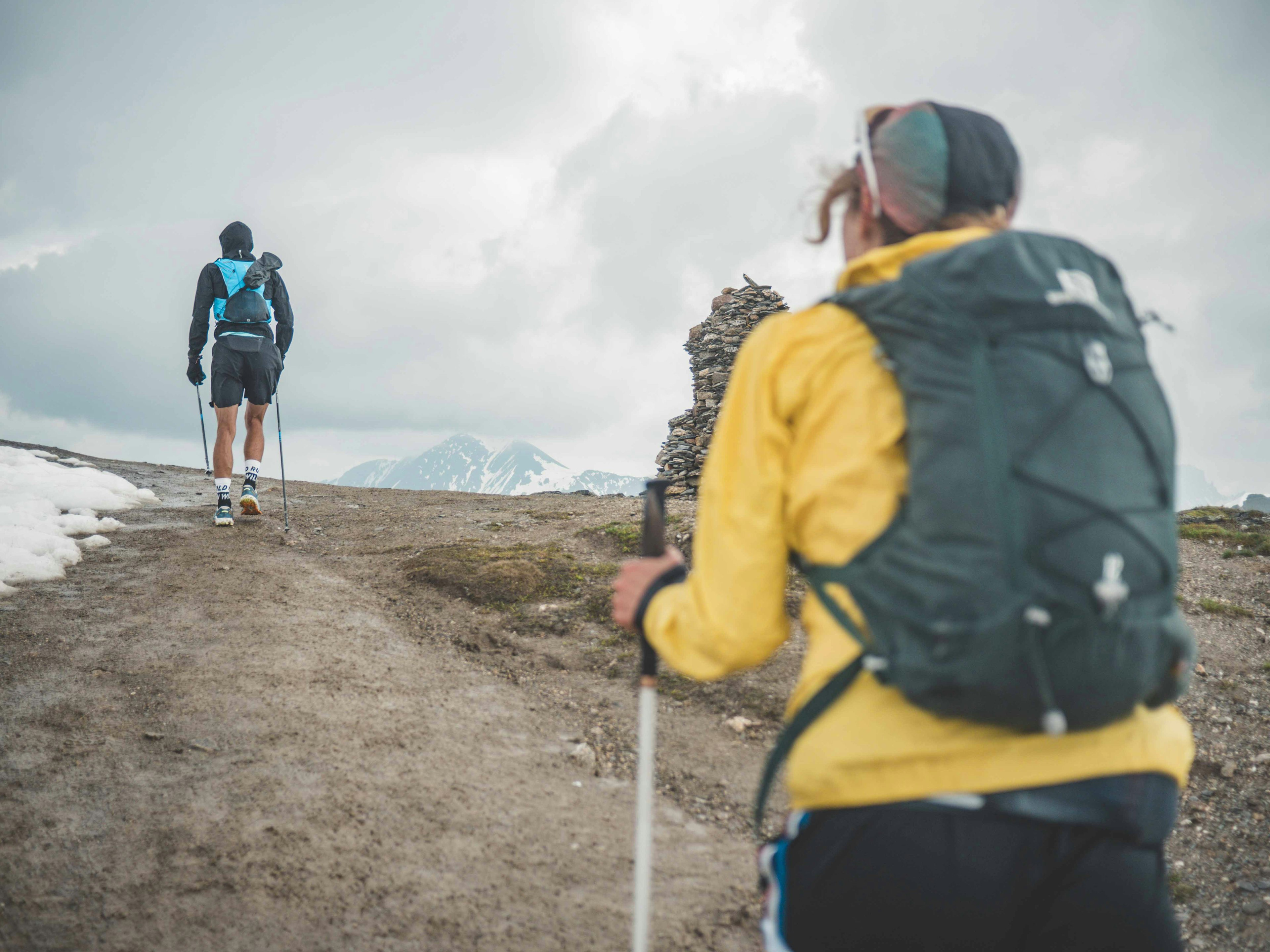
The highs and lows of the Tour du Mont Blanc
After a few days on the trail, your sense of time and distance changes. Hikers will no longer measure their day by kilometers or hours traveled – but rather by the cols, or mountain passes, that they’ve reached. The most famous ones are:
The Col du Bonhomme, which connects the lush Contamines Nature Reserve with the Alpine pastures of the Beaufortaine.
The Col de la Seigne, at the border between France and Italy, with a spectacular view of Mont Blanc, Aiguille du Peuteurey, Dent du Géan and the treacherous Grandes Jorasses.
The Col Grand Ferret, at the end of the remote Val Ferret, which brings a long, steep climb – and a descent on the other (Swiss) side that’s rolling and blissful.
The Col de la Balme, overlooking Chamonix valley, which brings hikers back into France for the final few legs before the finish.
And don’t forget the valleys. The TBM passes through winter sports hubs like Chamonix and Courmayeur, as well as through smaller Alpine valleys. A standout valley is the Val Ferret: the trail runs high above the lush green pastures on the valley floor, giving a splendid view of the mineral rock faces of the range on the other side. Plus, the Rifugio Walter Bonatti’s cappuccinos are the best you’ll find anywhere above 2000m (6500ft).
Do you need to be in great shape to hike the Tour du Mont Blanc?
You should physically prepare for the hike, yes. Getting in shape for the TMB is a question of cardio training and foot preparation. Hikers should be fit enough to cover their desired distance each day, of course. But don’t forget to prepare your feet to avoid blisters: break in hiking shoes before the first day of the hike, and bring along anti-chafing cream if you’re worried you might have rubs.
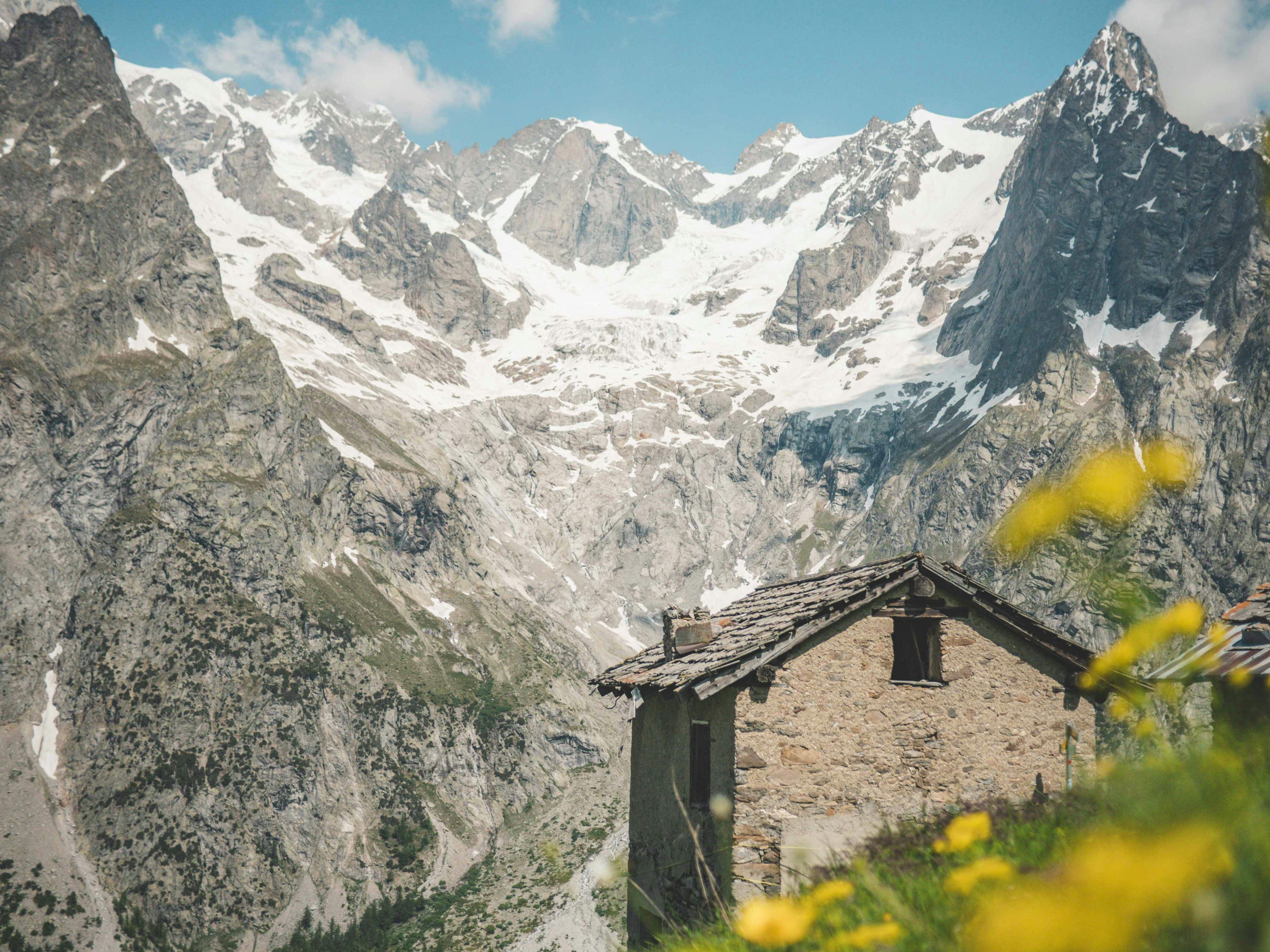
How do I get to the area to start the hike?
Typically, the route begins and ends in Les Houches (Haute-Savoie) in the French Alps and follows a counterclockwise loop around the mountain range. However, you can also start from other towns on the TMB, such as Chamonix (Plan Praz), Courmayeur in Aosta Valley (Italy) and Champex Lac. Although most hikers will go counterclockwise, the clockwise direction can also be done. This way, you’re getting a much more tranquil route.
- placement: native
- path: articles/in-content-native
- possible size: [f, l],
- targeting:
{ "url": "slow-travel-tour-du-mont-blanc-hike-alps", "destination": "French-Alps-&-the-Jura-Mountains", "continent": "Europe", "country": "France", "region": "French-Alps-&-the-Jura-Mountains" }
Les Houches is easily reached from anywhere in France using the train and Mont Blanc tramway connection. The latter is among the most scenic rail journeys in the world, so definitely worth a ride. You can also use the tram to access many mountain trails around Mont Blanc. Some peaks along the Tour du Mont Blanc are connected by cable cars so it shouldn’t always be an arduous hike.
How can I hike the Tour du Mont Blanc safely?
Mountain trekking is always about preparation. When it comes to the Tour de Mont Blanc, you must carefully study your way and know the ins and outs of the route. We’re talking about some of the highest peaks in Europe here, so the more you know, the better. And the more honest you are about your capabilities, the more you’ll enjoy the trek. Can you walk up to 8 hours a day with constant ascents? Does hiking for more than a week sound like a good plan at this moment in your life?
The weather conditions should also be considered. It’s one thing going through idyllic Mont Blanc Massif scenery when the sun is pleasantly shining. It’s a different kind of challenge when there’s a thunderstorm or a snowfall. With long-day hiking treks like TMB, good weather plays a vital role. It’s best to know exactly what to expect and be ready to react when emergencies happen. Have a look at the official safety information and study the mountain hazards that can happen during your time in the wild.
Equipment is another essential part of the Tour du Mont Blanc preparation. Your safety also depends on the things you take with you. GPS and detailed maps of the route you choose are obligatory. Check out the guide on the best trekking gear for a complete picture of items to take with you on TMB. And don’t underestimate the importance of comfortable, durable and waterproof footwear.
Why is the mountain called Mont Blanc?
Mont Blanc translates as “white mountain” in French and comes from the snow cap that covers the peak and the glaciers that stretch from its dome. Mont Blanc was first proclaimed the continent’s highest mountain at the beginning of the 18th century. The first documented climb occurred in 1786 when Michel-Gabriel Paccard and Jacques Balmat reached the summit of Mont Blanc starting from Chamonix.
What wildlife will I see on the trip?
One of the magical things about long-distance mountain trekking is the nature you see along the way. Apart from sublime panoramas, Tour du Mont Blanc provides a window into the fauna of the western side of the Alps.
Encountering ibex is almost a guarantee during the trail. These are mountain goats with long horns that usually feed close to the hiking routes and on alpine meadows. Another horned animal you may see is the chamois. They are smaller than ibex, and they love going up and down rocky slopes. The cutest creature you can meet on TMB is the marmot. These chubby ground squirrels come out during the warmer months and hang out at higher elevations.
Remember to keep a safe distance from all animals you see on the trail. The wilderness is their home, and when provoked, they can be dangerous and cause harm.
Ready to make it happen?
This is a trek you should book early – at least two months out – to find accommodation at the refuges. Yet it can be planned at the last minute for those who prefer camping. Autour du Mont Blanc is an easy-to-use website that helps plan daily stages. You can also reserve huts here.
The views…the food…the marmots! The Tour du Mont Blanc delivers at every step.
- placement: fullWidth
- path: articles/bottom
- possible size: [970, 250], [970, 90], [728, 90], [300, 250], [320, 50], [1, 1],
- targeting:
{ "url": "slow-travel-tour-du-mont-blanc-hike-alps", "destination": "French-Alps-&-the-Jura-Mountains", "continent": "Europe", "country": "France", "region": "French-Alps-&-the-Jura-Mountains" }
Explore related stories




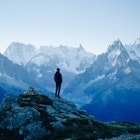


 HikingSlow travel and long distance hikes: how to embrace the new outdoor travel trends
HikingSlow travel and long distance hikes: how to embrace the new outdoor travel trendsJul 13, 2022 • 8 min read

 HikingSwitzerland debuts a stunning multi-day hike just in time for summer: your guide to ViaBerna
HikingSwitzerland debuts a stunning multi-day hike just in time for summer: your guide to ViaBernaMay 24, 2022 • 2 min read

